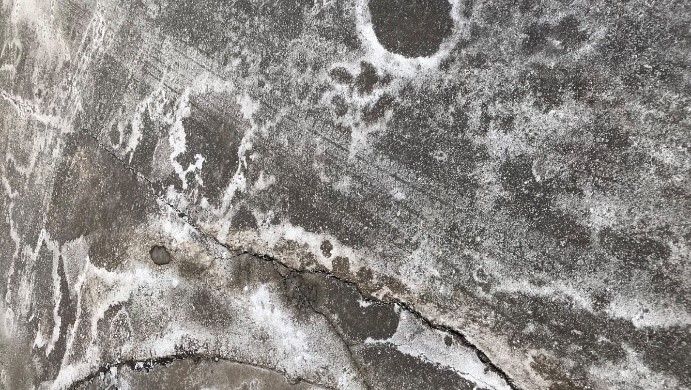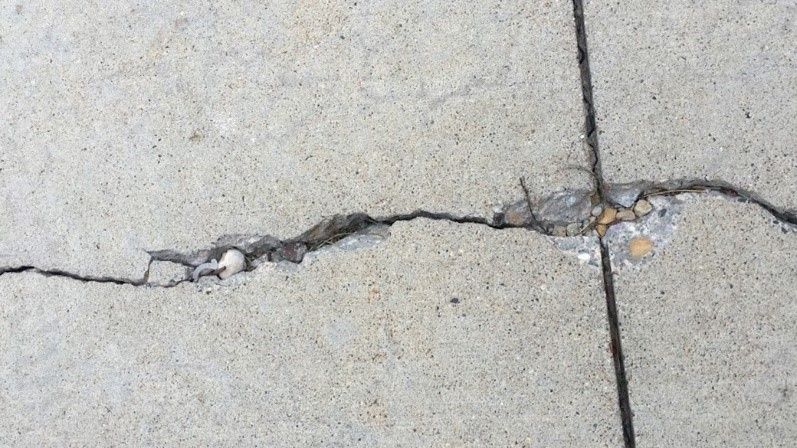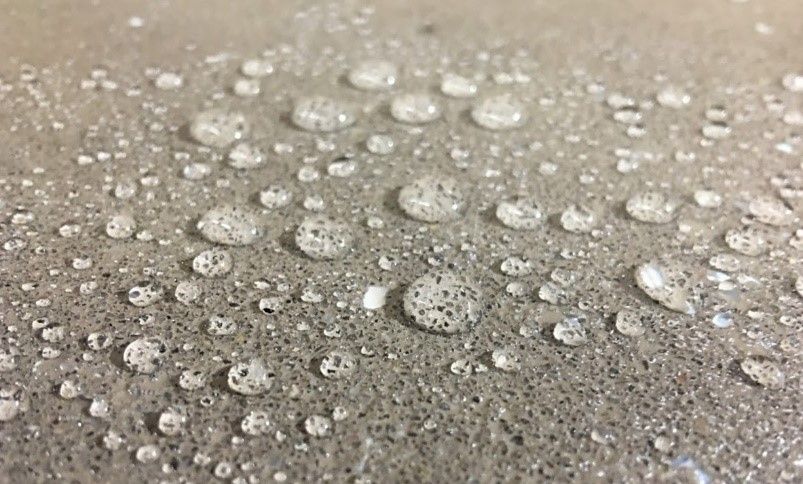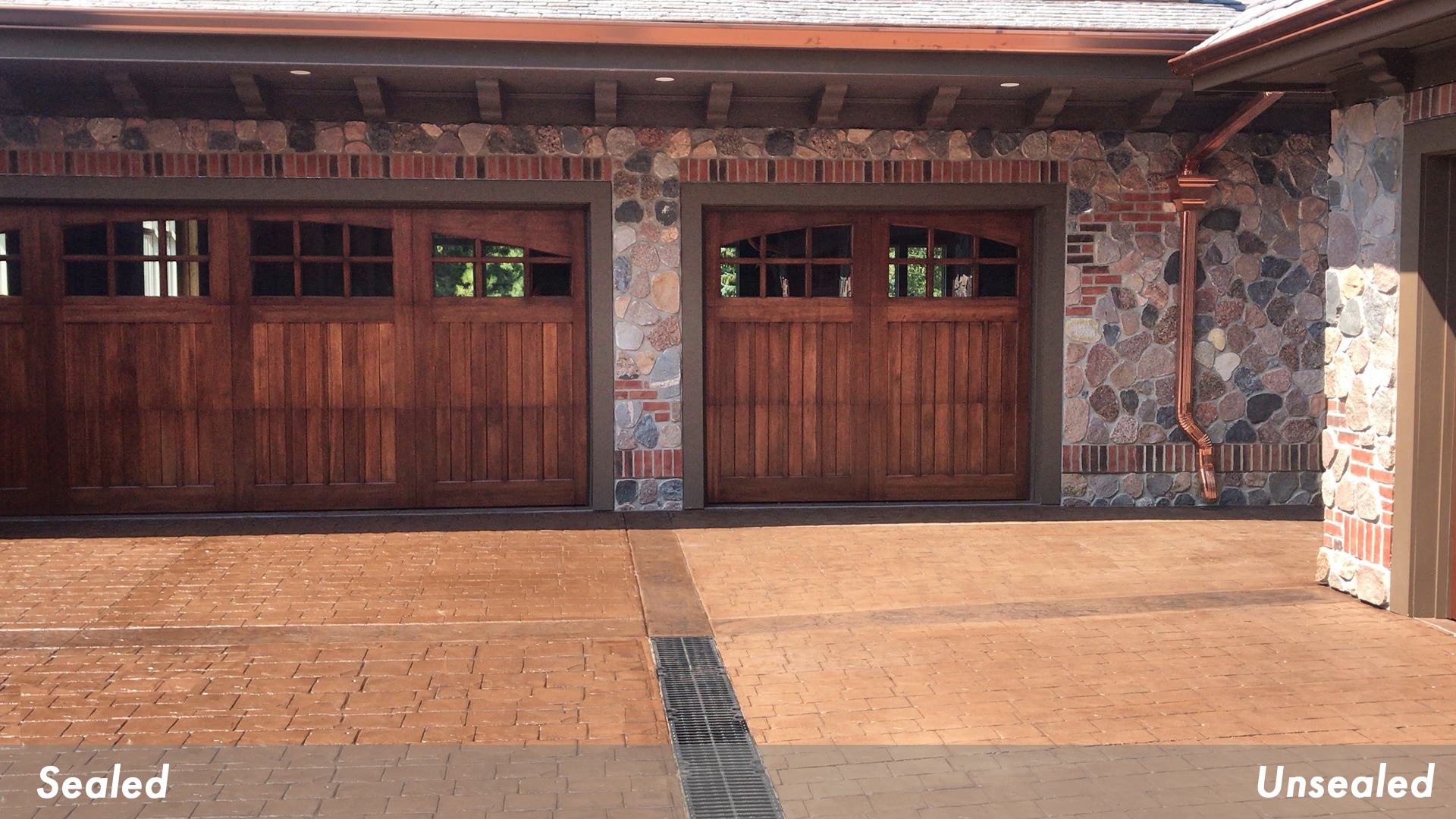EFFECTS OF WINTER WEATHER ON UNPROTECTED CONCRETE
When the winter weather arrives, it is important to understand the value of protecting your concrete during these cold months. The results of not caring for your concrete before and during the low temps arrive can be extremely detrimental. Follow along to understand what could happen to your concrete this winter if you don’t take the time to protect it.
Salt Intrusion Damage
Although you might think of salt as the main solution for deicing or removing snow from your driveway, it can be very harmful to any concrete space. As salt causes ice and snow to melt, it lowers the freezing point of water, attracting moisture. This then eventually increases the freeze-thaw cycle. Salt also leaves a white coating on the surface called efflorescence. This results in the concrete losing its aesthetic appeal. Applying sand instead of salt as a form of traction is a great alternative.

Surface efflorescence
The Freeze-Thaw Cycle
When unprotected concrete is exposed to a freeze-thaw climate, there is a higher chance of water intrusion. Moisture in all its possible forms -snow and ice, rain and water vapor – can result in the deterioration of concrete. When water hits unsealed concrete, it fills its pours. The water eventually freezes, expanding in the surface, causing cracks and other forms of deterioration. Deterioration can consist of hairline cracking, surface scaling, discoloration, rock pops and joint corrosion. Wall rot is also possible with excessive moisture exposure. The more water intrusion, the more damage there is to your unprotected concrete.
In order to prevent water intrusion and further damages, sealing your concrete before the temperature drops is highly recommended.

Cracks from unsealed concrete

Sealed concrete repelling moisture intrusion
Plowing Your Concrete
Keeping the snow off your concrete will not only minimize the possibility for ice but decreases the possibly for damage during the freeze-thaw cycle. When plowing snow and ice from your unprotected concrete, it is important to avoid using metal blades as much as possible. Metal blades on plow trucks and shovels can cause scraping, chipping and rust marks on your concrete. Instead, use a plastic edge to clear snow and ice to prevent damage.
Preventing These Damages
To avoid most of these damages from happening, applying a professional sealer to your concrete is the best way to protect it. Durable against water, salt and other harsh chemicals, we recommend applying a sealer every 2-3 years. The more you care for your concrete and prepare for the winter ahead of time, the longer your beautiful concrete will last, prolonging your concrete investment!

